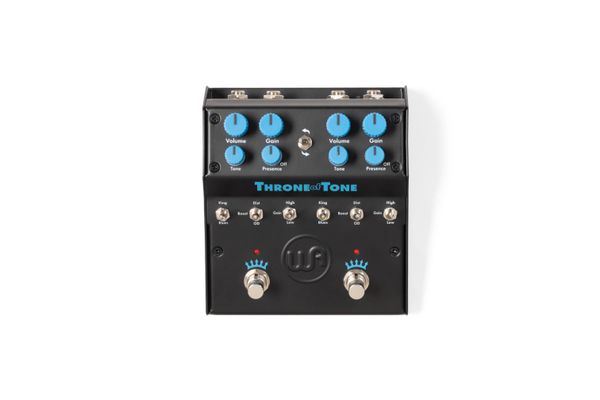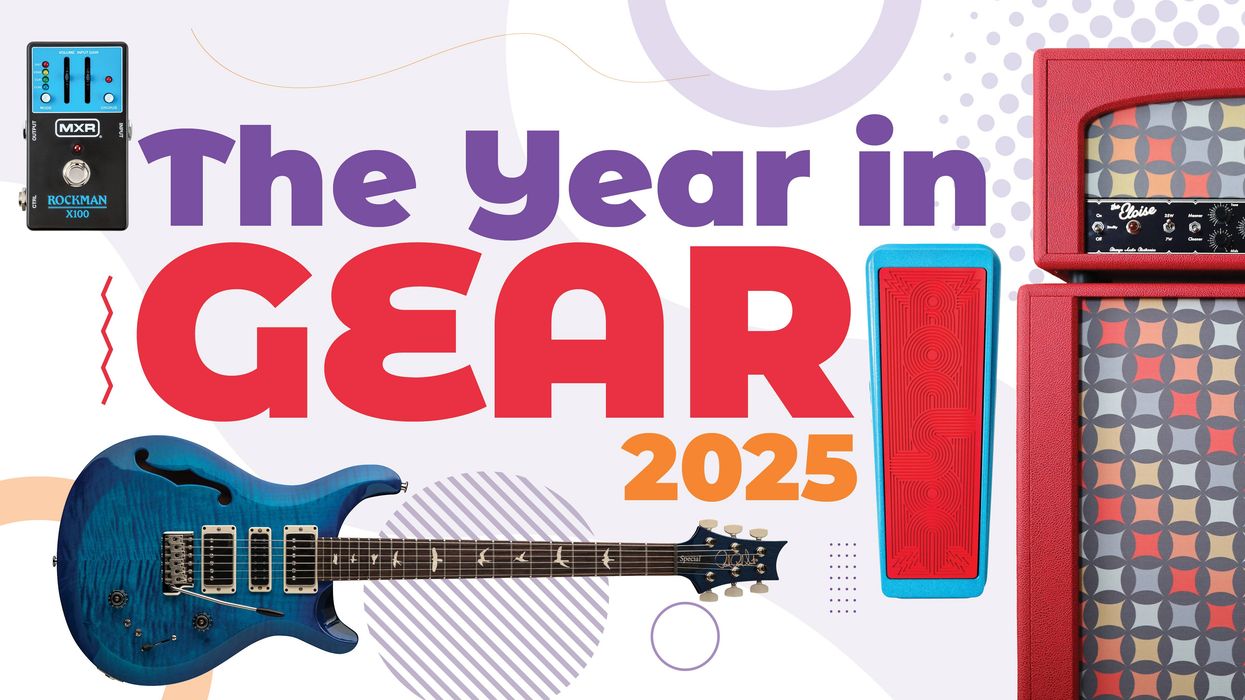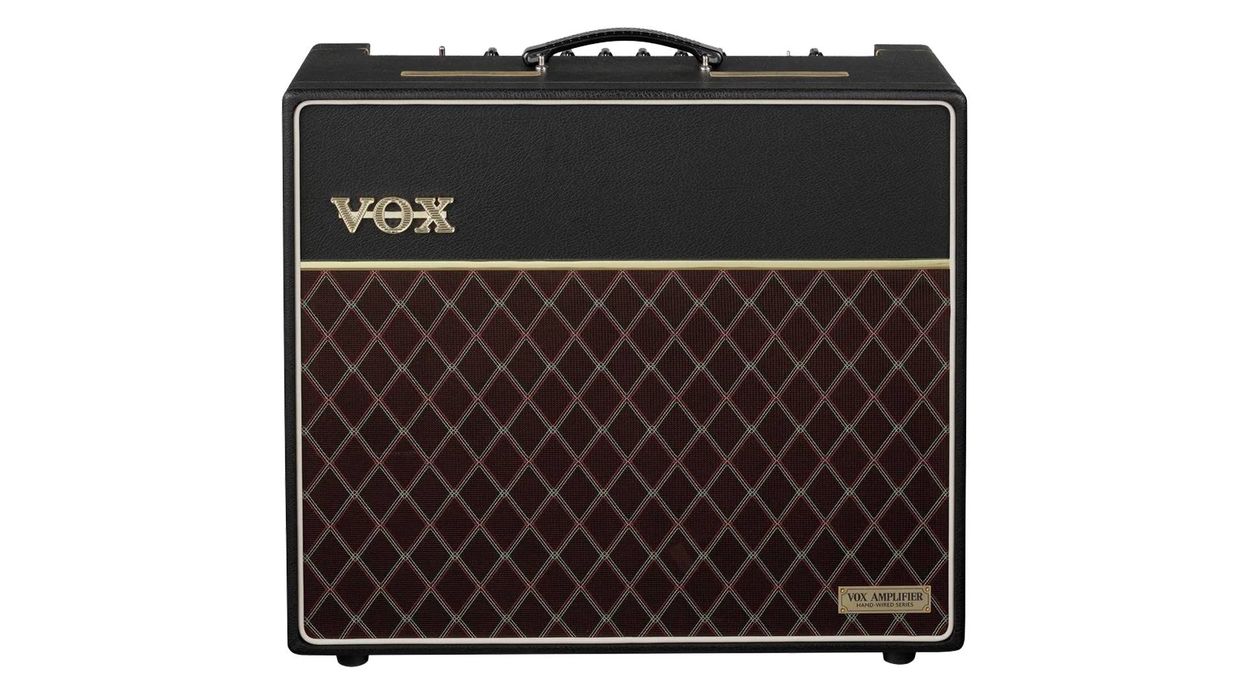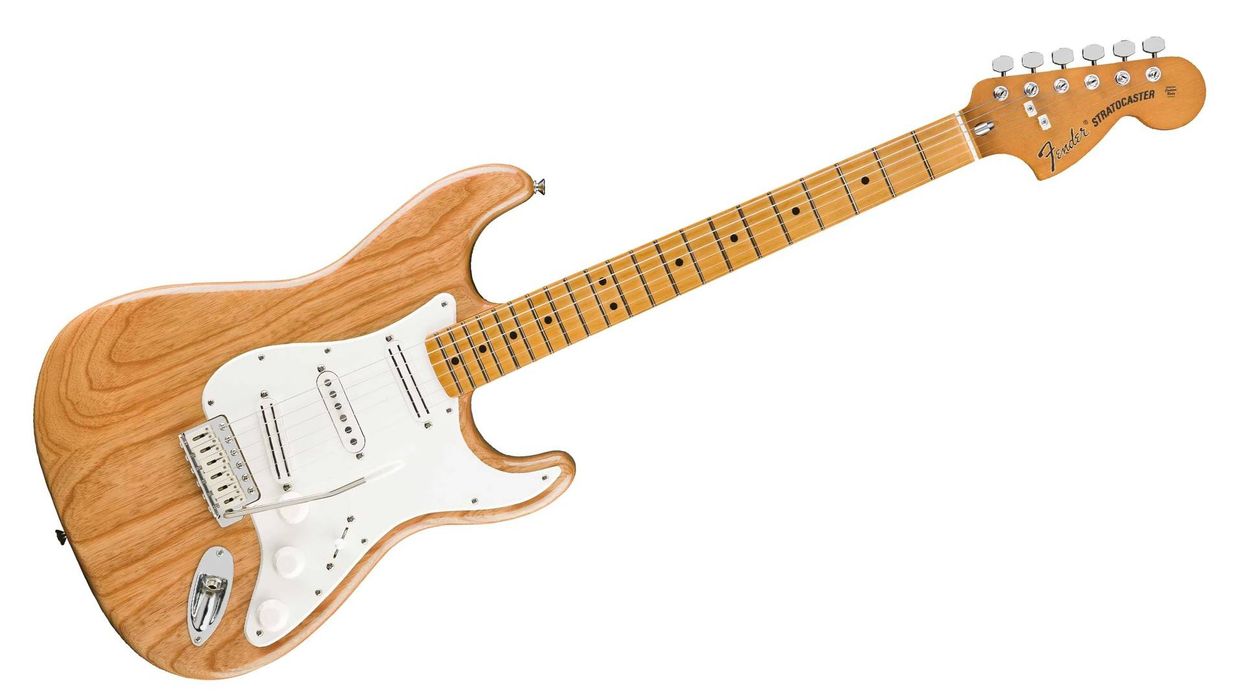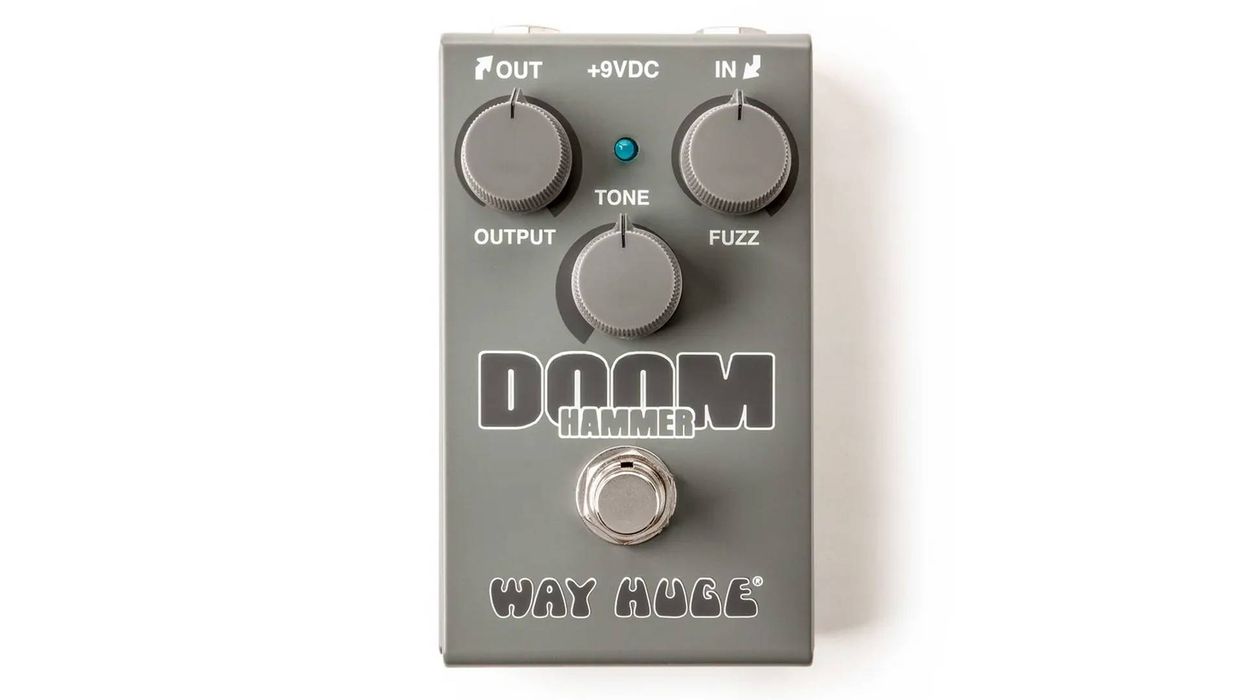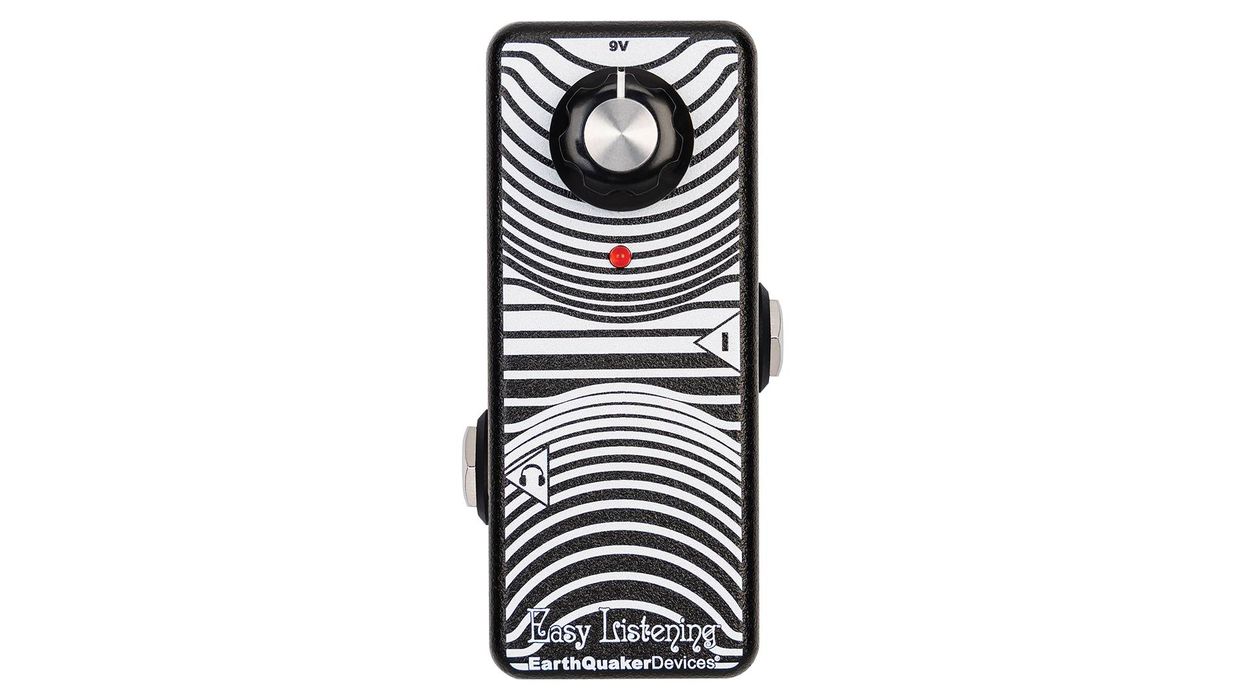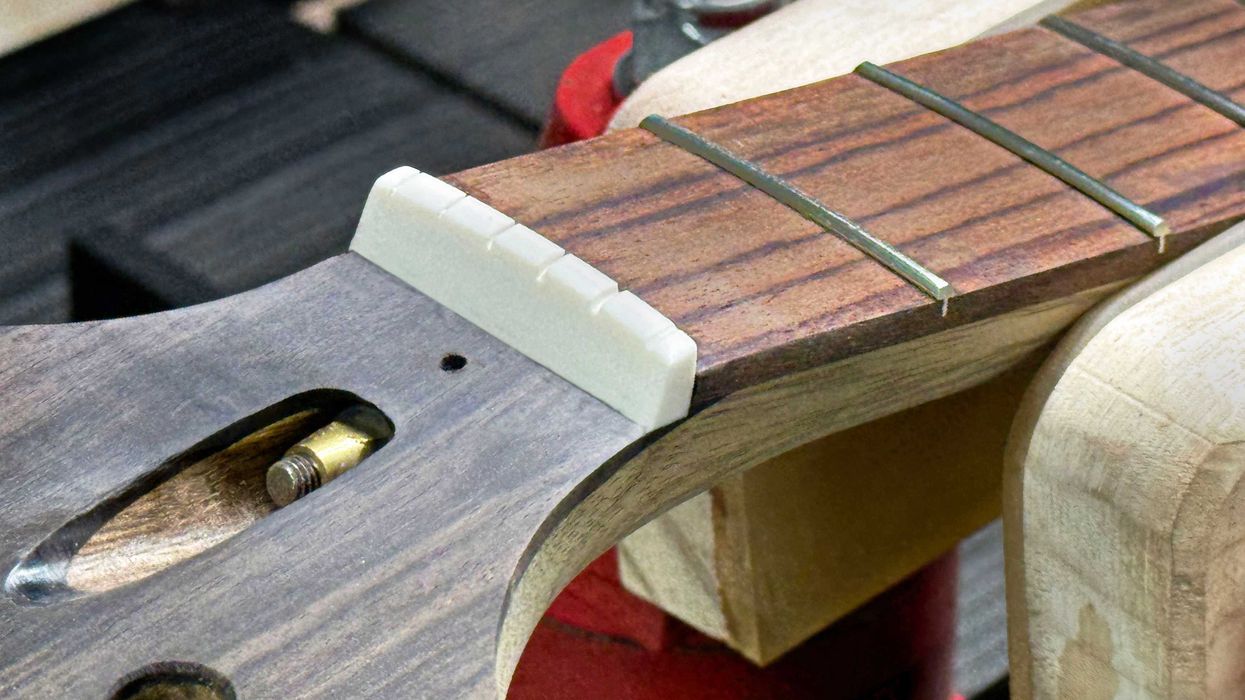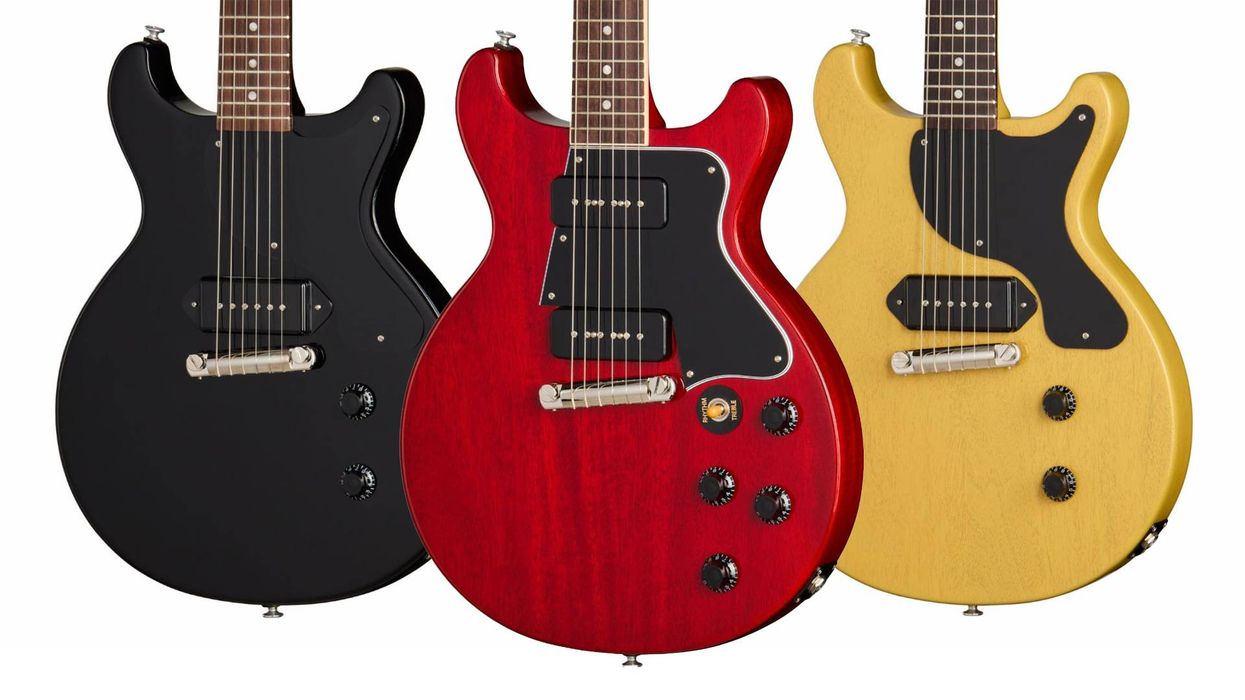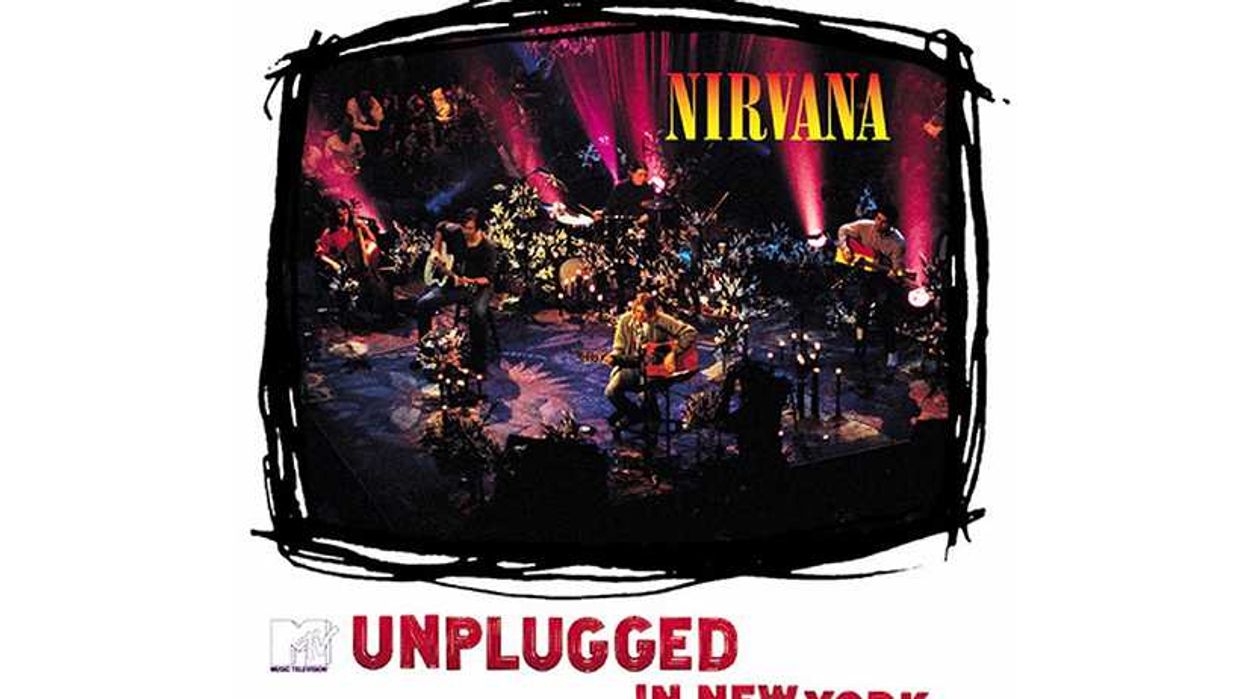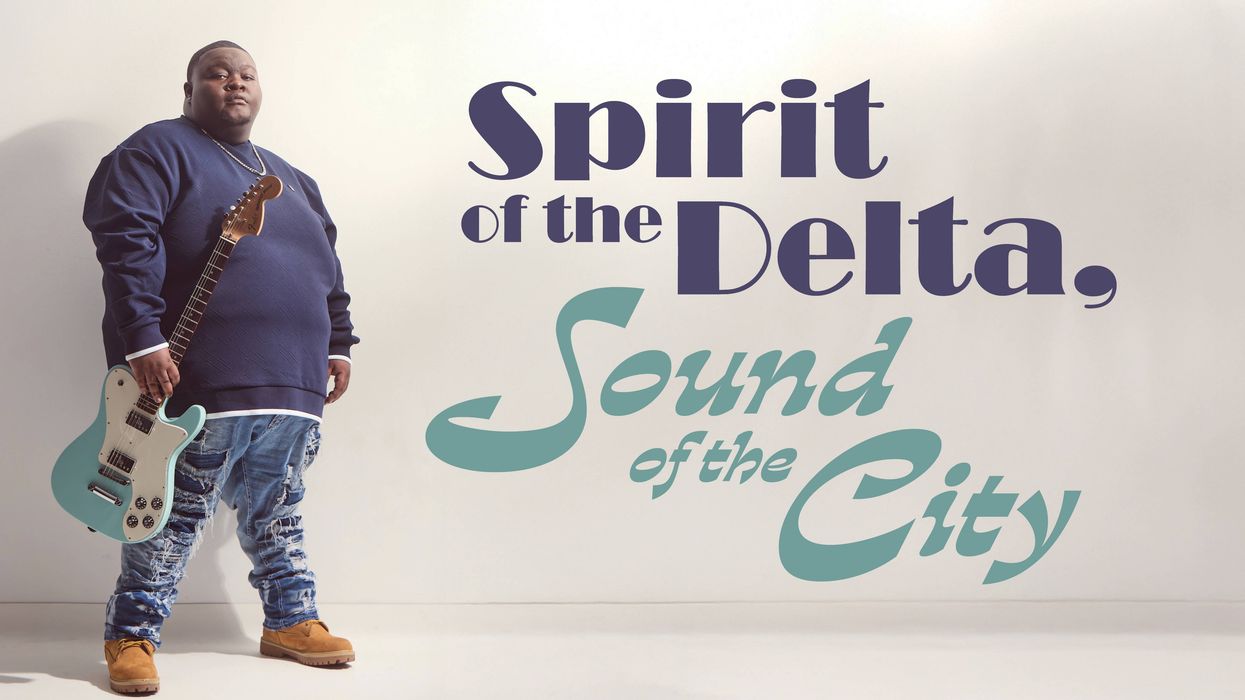Though the business of cloning pedals is competitive (and endless fodder for frothing Reddit denizens), I appreciate when a pedal company offers a useful twist on an established formula. Warm Audio accomplishes this with the Throne of Tone. It is clearly inspired by the Analog Man King of Tone. But it is also very obviously a nod to the Marshall Bluesbreaker, the pedal that Mike Piera used as a departure point for his KOT design. The Throne of Tone, though, might mark the point at which the snake bites its tail. It cross-pollinates the circuits in a dual overdrive that opens up many, many tone-coloring avenues and options.
Split Personality
Mike Piera ripped up a friend’s Bluesbreaker to build the first King of Tone. But by the time he rewired it, it was a different pedal altogether. To the extent that the KOT and Bluesbreaker sections are accurate in the Throne of Tone, the differences between the original Bluesbreaker and King of Tone are easy to hear. It’s hard to accurately assess the accuracy of the Throne of Tone’s two circuits without a real-deal King of Tone or Bluesbreaker at hand. But I’ve played through both as well as excellent clones, and in both sound and feel, both Throne of Tone circuits are in the ballpark and better.
In very general terms, that means the “king” side is a bit less aggressive, darker, and more dynamically responsive to changes in pick intensity—especially when you want to go from gnarly to truly clean. The “blues” side is a bit more dynamite, revved up, and lively in the midrange. It’s more immediate and a bit harder to keep on a leash for dynamic purposes. But the Throne of Tone is a great multiplier—and mixer—of these qualities, because you can experience each basic voice through the lens of high gain and low gain settings, a boost, an overdrive or a distortion. Additionally, output from each side can be modified with a presence control which appears on neither pedal in its original form. Add up the possible tone permutations and, well, you’ll probably be less occupied with the accuracy of the circuits, and more excited about harnessing the copious killer tones here.
Pick A Door
Of the three modes, the boost is the most user friendly and easy to apply to a base tone that just needs heft and body. It’s also great for demonstrating the basic duality in the king and blues voices—which align along a Marshall/Fender divide. The blues, or Marshall-like side feels considerably more compressed as a boost, but it positively rings in the high-mid zone. If you want a guitar to be boss in a mix it dishes the goods. But it’s agreeable too, and flattered PAFs, Telecaster single-coils, Wide-Range humbuckers, and a Rickenbacker 12-string—lending all of them an infectious, excited edge. Matched with an EL84 amp it can feel a touch redundant, but with 6L6 amps it shines. The king, or more Fendery side, sounds comparatively scooped. It feels much less hyperactive, and it excels in the clean, low-gain range, but it also gets squishy when you dig in.
These same qualities are very apparent in the overdrive mode. Each voice sounds more compressed than the boost mode. But the higher reaches of the gain controls yield treasure. Here again, the blues side was explosive—sounding at many settings like Malcolm and Angus Young after consuming a bag of firecrackers. Angry but fun. The king’s OD side, at high gain range, sounds much more like a mid- to late-’60s Bassman at high volume: crunchy, but softer around the edges. Each of these voices can be nudged into more savage extremes by the high-gain toggle, which depending on your amp and guitar, can be surprisingly airy to downright sizzly.
The distortion mode kicks the high-midrange in the pants, but retains much of the overdrive mode’s basic coloration. It’s an especially cool match for 6L6 amps—especially on the king side. But the way the distortion modes remain responsive to dynamic input like volume and touch variation is impressive. Distortions can often sound quite binary—either raging or gobbling up midrange oxygen. Both distortions in the Throne of Tone give you gray area to work with that can range down to chiming clean tones.
The Verdict
The original King of Tone and Bluesbreaker pedals are revered for good reason. And if Warm Audio’s take on the two circuits represents even 80 percent of those pedals’ prime tonality, you’ll still hear and feel what makes them special. As a whole, the Throne of Tone is adaptive and versatile. The kind of pedal that could save your hide and solve problems in a studio. But it could work the same magic in a live situation, especially one with a backline surprise in store. In performance, the vertically oriented mini toggles, which are situated perilously close to the bypass switches, could be a liability. I accidentally switched the gain and mode switches with my toe more than once. That’s a shame, because they make experimentation so much easier than when DIP switches are in the mix. It’s hardly a dealbreaker, though. For $229, the Throne of Tone offers a very big bucketful of tone options that can span civilized and rabid.
